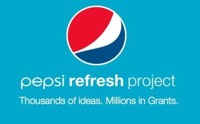PerkettPR is pleased to continue our series of “Persuasive Women” interviews with Shelli Johnson, a life/leadership coach, consultant and entrepreneur who lives on the Frontier of Wyoming. Shelli shares her thoughts on living life to the fullest and how she pushes herself and others to take on new challenges and pursue new goals. We think you will truly enjoy and benefit from her motivational answers to our questions. Shelli spent 15 years building her first business,
Yellowstone Journal Corporation/NationalParkTrips.com, before selling it in September 2008 to Active Interest Media (owner of Backpacker, Yoga Journal, & other magazines).
In addition to consulting and writing, Shelli is a life/leadership coach with the mission to help others create a life of meaning. Her coaching business, Epic Life, is unique in that it offers on-demand coaching throughout the year with an option to include an epic, outdoor adventure in an awe-inspiring place.
Shelli’s own blog is HaveMediaWillTravel.com. Topics include adventure, travel, family, leadership, etc.
Our Q&A:
You are a wife, mother, life coach, writer, consultant… and still find the time to embark on life-changing adventures (such as your backpacking adventure in Alaska). How do you fit it all in?
I make it all fit in. There’s a difference between a full life and a busy life. Mine is a full life.
To fit it all in, one has to know what’s important in her/his life and what isn’t. It sounds cliché, but every morning, I consider that today could be my last. None of us knows how much time we have left. (I have a 52-year-old girlfriend who died, suddenly, of an aneurysm a week ago Wednesday.)
If today will be my last, how will I live it? Ask this question, seriously, and you get to the heart of what’s important real fast. This type of thinking is a motivator that helps me fit all that is important into my day, and to not waste time on that which isn’t.
Speaking of important, my husband of 19 years, Jerry, and our three sons, are wonderful blessings and a huge support in my life. Without them, my life would not be full. They deserve a lot of credit for my life.
There are more practical reasons I am able to fit it all in. For one, I wake up and work out at 4 a.m. three times a week. After we had our first son, it was 6 a.m. After our second son, it was 5 a. m. After our third son, who is 4, it became 4 a.m. Waking this early works well for me. It “creates” time for me, energizes me, which causes me to be more productive during the day, and it provides a tremendous health benefit.
Second, I live by my calendar. I put a lot of emphasis on planning each month, and then I stick to the plan. If I set “rules,” I tend to honor them. Good planning means I can tackle one day at a time, focusing on the present – rather than worrying about the future. (This is no small thing for me, a predisposed worrier.)
Third, I live on the Frontier of Wyoming, which means my commute, if I choose to have one, is an 8-minute walk or a 2-minute drive. (My office is a 1973 RV parked by the river.) When you live in a small town, where everything is nearby, there’s not much time spent running errands or to appointments. So, I no doubt have more available time in my life because I live in a small town.
Fourth, inspired people tend to be more vital. Wyoming provides me not only with more time, but also more space. I love the expansiveness of my backyard, Wyoming’s Wind River Range. All of the things my family and I enjoy doing, and that most inspire me, are right here. Most days, I wake up inspired.
Finally, I say “no” a lot. When you get to be 43, and you’re a wife, mother, daughter, sister, friend, business owner and adventure-seeker, you have to say “no” more often, or suffer the consequences. Like I said, life is short.
As for fitting in epic adventures, I include a number of them in my life each year. These are not vacations. There’s nothing leisurely about them. They grow and inspire me. I become more as a result of them. And, interestingly, except for my recent NOLS Alaska Brooks Range backpacking adventure, these adventures are not costing me much in the way of time. For example, it cost me only one day (23 hours) to hike 44 miles, crossing the Grand Canyon and back, and another long day (20 hours) to hike 48 miles across Zion National Park. Yet what I gain from a single-day, epic adventure, is lasting.
I should mention that I don’t fit it all in, 365 days a year. Some days I fail miserably at doing so. The wheels come off; things happen that weren’t planned, or I am just tired, and I waste a day or three. But, hopefully, this is the exception, not the rule.
On your blog, you talk a lot about “route finding.” Can you explain this concept a bit further?
By “route finding,” I mean being at choice in life. We go through each day, week, month, year and decade with endless opportunities to choose how we want to live our life. Routes represent choices. In life, you arrive at forks in the road. You can take a common route or get off the trail and chart your own course. Route finding is a metaphor I can relate to because in the outdoors, I route find a lot. I often follow a trail, but I also like to go off-trail for purposes of exploring and to experience a different vantage. Sometimes one choice is harder, but the rewards are greater. Or, it could be that the hard way is just the right way. Or, sometimes it just makes practical sense to take the safe and easy way.
We make choices and we are, largely, the result of them. Our life is a story. The key is to have an active role in that story, and to actively choose and determine how your story plays out. Route finding refers to the choices we make along the way that impact our life. (Choices, by the way, also include choosing how to react when things don’t go as planned.)
In your adventures, you have pushed yourself to take the “high route” and push yourself more physically. What motivates you to continuously challenge yourself in this manner?
Family hikes, ski trips, trail runs and bike rides are physical pursuits that inspire me and keep me fit and healthy. These activities are fun and they fill me up, while creating wonderful family memories.
On the other hand, an adventure that pushes me physically, mentally and emotionally, and makes me uncomfortable much of the time, is what I call “epic.” Why do I do these epic adventures is a question I get asked a lot. There are moments during an epic adventure that take my breath away and fill me with overwhelming joy. This is why I’m drawn to natural, awe-inspiring settings in the first place. It’s a given that the views will take my breath away, and yes, that’s a big selling point for me when it comes to an epic adventure. But that is only the beginning.
There are also mentally challenging moments during an epic adventure when I want to quit, and in fact it would be easier to quit, and I may exclaim to myself, “Whose idea was this?” These are the times my saboteur shows up. And let me tell you, I can negotiate and argue with myself pretty effectively to continue – or to quit. I can make compelling arguments on both sides of the issue, but I only want the story to end in one way, and that is as a success. The whole experience causes you to discover and know yourself; there’s no hiding. The kind of pushing myself that is required of these epic adventures means I will have this opportunity to choose the hard thing, to beat down my saboteur(s), so to speak.
In my experience, the harder I work at something, the greater the reward. The view is always grander after hiking up a hill. And, chances are I’ve learned a great deal more in the process than had I stayed on the (safer, more predictable) trail, or on “lower ground.” So, the more physically challenging an adventure is, the bigger the pay off. No doubt, the accomplishment is part of the lure. The accomplishments mean something to me, and help me, in all areas of life when I lack courage or confidence.
There are also moments during these epic hikes when I’m emotionally tender. I am often moved to tears during the later stages of these adventures. The end, which typically amounts to more of a solitary march than a hike, sometimes during the dark of night, is very personal for me. About 95% of the personal growth I experience on an epic adventure happens during this last 5% of it. During this stage, I am humbled, and have the most clarity about what’s most important in my life. It makes for a great ending. This emotional part of the adventure, despite its difficulty, is one of the reasons I keep going back for more. It is what makes me more, and better than I was before.
Although building a business isn’t physical, it has similarities to an epic adventure. Building our first business, Yellowstone Journal Corporation/NationalParkTrips, over the course of 15 years was like climbing a mountain, complete with hard work, loose terrain, “false summits,” exposure, risks, uncertainty, disappointment, pain, re-routing, falls, storms and other difficult factors. But, ultimately, there were many rewards, which made it all worth it.
Whether it’s in my personal life or a business pursuit, it’s this combination of going further than I have gone before, and expanding all of my capabilities, that grows me, and makes me better. Why wouldn’t I make time for things that make me better? When at your best, you participate in your life more. It’s a lot of work, but as far as I can tell, the result is all upside.
As a goal-oriented person, how do you personally prioritize your goals?
It goes back to the first question. I really try to live like I’m dying. I spend a lot of time getting clear, and reminding myself of who and what are most important in my life. And then my first priority is honoring these people and things. They are at the top of my life. When I’m not honoring one of these, a sort of “service engine soon” alert goes off in me, causing concern (and insomnia).
My family comes first. My cell phone is shut down from Friday evening until early Monday morning. Weekends, especially, are for family, although we have ‘lots of family time and traditions built in during the week, as well. Other important relationships are also a priority, and I schedule time for them. For example, I have a standing date on Wednesday afternoon to have tea with my parents.
I just read a book where the authors interviewed 104 hospice patients. At the end of their lives, when asked what brought them the most joy and meaning, every single one of the patients answered: relationships. It wasn’t work or things they did. It was the people in their lives that mattered most. I think this is a good lesson for the rest of us, especially when it comes to prioritizing.
I still have work to do to create more time with family and friends. Then come all the other priorities, which include coaching calls, writing, marketing, consulting, meetings, reading/researching/learning, and the list goes on. Google calendar keeps it all organized for me.
Another tool I use for prioritizing is routine. I try to create good habits and then develop them into routine. Routine means not having to spend energy or self-control on making decisions throughout the day and week.
Finally, this may seem like an answer to a different question, but because it’s a priority it comes up for me. We each have one body. Why wouldn’t we want it to operate optimally. Eat right and exercise and you have more energy. Everything is better. If you value your life, taking care of your health has to be a top priority. For me, it’s non-negotiable.
Have you ever encountered someone or something that has gotten in the way of attaining a goal? How did you handle it?
Sure. Often. Usually it’s myself, or my own limiting beliefs, that get in the way. I am impatient. While at times this serves me, it also costs me. I often will not achieve a goal because I try to force the timing of it. Out of my impatience, I will fight the current instead of going with the flow. I’m sure I have worn people out with my impatience. Being more patient is a forever goal for me.
I have abandoned goals when success seems unlikely. I don’t like failure, but I sure value it. I also remind myself that I’m not saving lives. Because I’m so goal-oriented it’s easy for me to get consumed by a goal and lose perspective. I’m getting better at detecting this earlier and more often during the process of trying to achieve a goal, but it’s an ongoing effort.
You have traveled quite extensively, but what is your favorite spot to visit?
Oh, I can’t answer this. The question is unreasonable! Seriously, I am very lucky to be living in my favorite place, Wyoming’s Wind River Range. My favorite travel spot is probably a national park – probably Yellowstone. But asking someone to name their favorite national park is like asking them to say whom their favorite brother or sister is. I love each national park for its own reasons. My favorite national parks are Yellowstone, Zion, Grand Teton, Grand Canyon and Yosemite. For cities (and culture shock), I love San Francisco and New York City. For leisure? Hawaii. Oh Hawaii, how I love thee.
What is your favorite movie or book?
I love movies, but I don’t have a favorite. Reading, on the other hand, is one of my passions. I’m a voracious reader. It’s hard for me to choose a single favorite. But, some favorites that represent a cross section, are: The Solace of Open Spaces, by Gretel Ehrlich; Endurance, by Alfred Lansing; The Art of Motorcycle Maintenance by Robert Pirsig; A Pearl in the Storm, by Tori Murden McClure; Tuesdays with Morrie, by Mitch Albom; Good to Great, by Jim Collins; and Outliers, by Malcolm Gladwell.
What is your next goal (what do you have planned next)? Could you tell us a little bit about your leadership coaching business?
My focus right now is developing my life/leadership coaching business, Epic Life. The work I want to do is inspire people to live as if they’re dying, as if every day matters. I will be asking my clients to invest six months to a year with me to do the work and make the changes that are necessary to create a life of meaning.
As my client’s life coach I am their champion, but I am more than that. I remind, and hold my client accountable, to what their life purpose is and to what they say they want their life to be.
In 2005, I hired a life coach, and it had a tremendous impact on my life. Today, even with a full life, I continue to work with a life coach. Having a champion in my corner, cheering me, but also holding me accountable, is of great value.
As a life/leadership coach, I want the hard cases. I want clients who are willing to work hard, to make hard, positive change. I think life should take your breath away. We should strive for an epic life. Epic Life’s core offering is unique in that it combines year-round coaching (scheduled monthly, or used “on demand”), with an epic adventure. The adventure will be a sunrise-to-sunset, unforgettable experience in an awe-inspiring location.
The epic adventure serves as a platform from which clients will grow and be able to practice for life’s hardships and challenges. Part of the unique proposition of Epic Life is “leveling up” my clients. I want to choose an adventure that my client isn’t certain he/she can do, but that I know he/she can do.
Finding an adventure that will inspire my client is the easy part. To be effective, the adventure needs to also test them physically, emotionally and mentally. For example, if I have a client from San Francisco who has not hiked more than six miles in a day in the Marin Headlands, I might select 10-mile and/or all-day hike at altitude for his/her epic adventure.
My clients will gain an unforgettable experience, a significant accomplishment (inc. “bragging rights”), inspiration, expanded leadership, more confidence, increased emotional range, a health benefit, and a greater mental toughness and resilience that will serve, and better prepare, them for life’s challenges and hardships.
If I do my job well, my client will return more, and better, than he/she was before the experience. (The website and fan page for the business is under development; for information, email Shelli.)
I’m also starting work on a dream project that involves producing and publishing and what I hope will be a work that facilitates a legacy of inspirational wisdom. It is still very much in development.
Shelli Johnson’s blog is HaveMediaWillTravel.com, which includes posts about travel, adventures, life and leadership, personal development, fitness, nutrition and more.

![cp_2013_smb_influencer_champion[4]](https://perkettprsuasion.com/wp-content/uploads/2013/10/cp_2013_smb_influencer_champion41-300x300.png) Over the last 20 years, I’ve been blessed to not only run my own
Over the last 20 years, I’ve been blessed to not only run my own  Newsmakers in social marketing tend to be large companies, with big ad spends. Small and midsize companies can sometimes feel as though they’re at a relative disadvantage.
Newsmakers in social marketing tend to be large companies, with big ad spends. Small and midsize companies can sometimes feel as though they’re at a relative disadvantage.  Everyone has influence, and Klout has made it their mission to tell each of us what that is. They accomplish this by using data from your social networks to gauge your Klout Score. And as your score increases, it becomes exponentially harder to increase your Klout. But there are things you can do to proactively boost your score and, more importantly, keep it as high as possible. AllTwitter Co-editor Shea Bennett posts a visual guide to help boost your score –
Everyone has influence, and Klout has made it their mission to tell each of us what that is. They accomplish this by using data from your social networks to gauge your Klout Score. And as your score increases, it becomes exponentially harder to increase your Klout. But there are things you can do to proactively boost your score and, more importantly, keep it as high as possible. AllTwitter Co-editor Shea Bennett posts a visual guide to help boost your score – 
 Go ahead and throw out everything you used to know about SEO, such as link building, keyword-rich content, internal links, and tracking results on SERPs. It’s time to start over.
Go ahead and throw out everything you used to know about SEO, such as link building, keyword-rich content, internal links, and tracking results on SERPs. It’s time to start over.  You’re a small business with very limited resources (time, money, and employees), so how on earth can you incorporate a social media strategy into what you’re already doing – especially when there are so many avenues out there to cover? Liana Evans provides some helpful tips to get the most out of
You’re a small business with very limited resources (time, money, and employees), so how on earth can you incorporate a social media strategy into what you’re already doing – especially when there are so many avenues out there to cover? Liana Evans provides some helpful tips to get the most out of 





